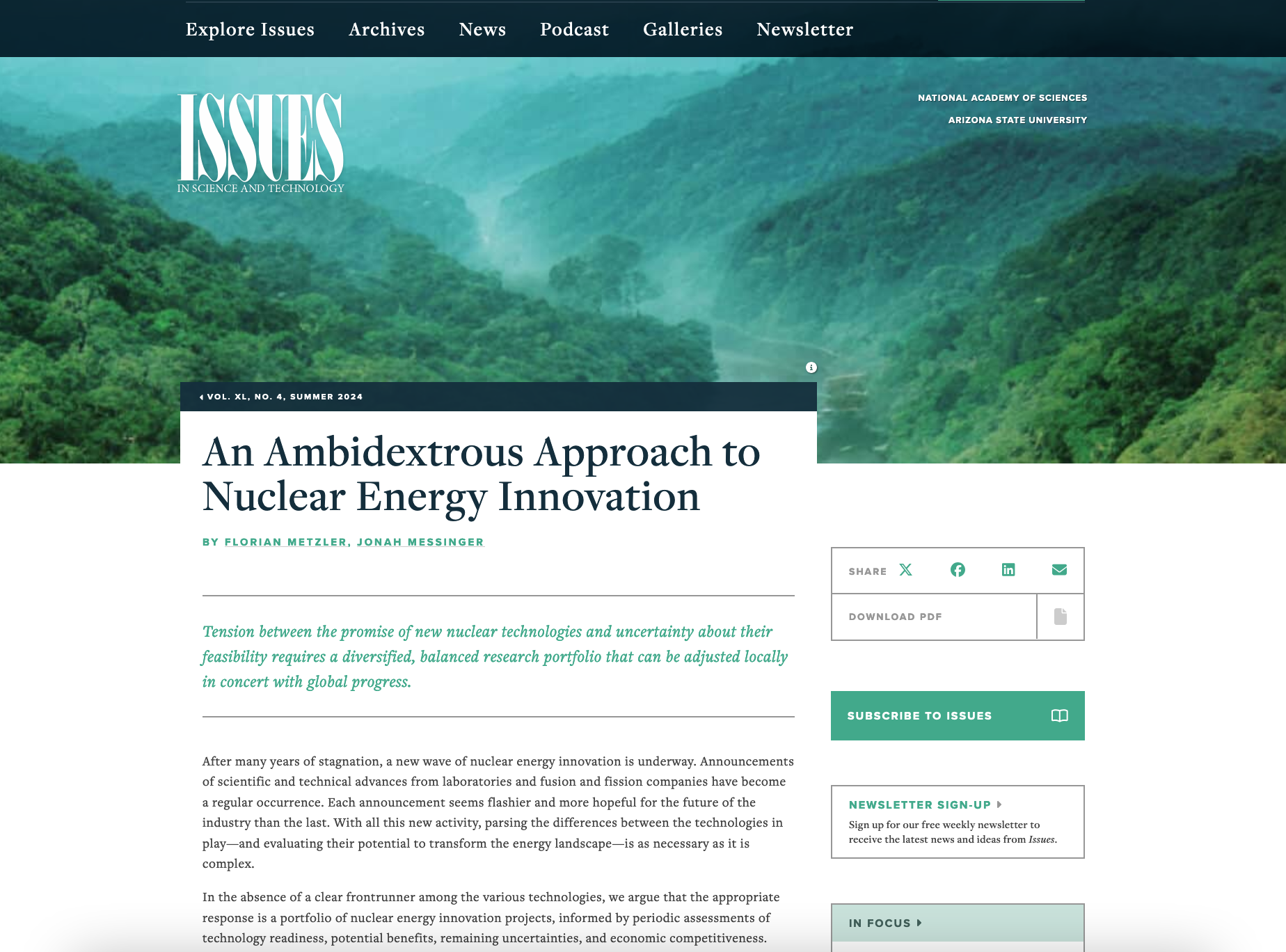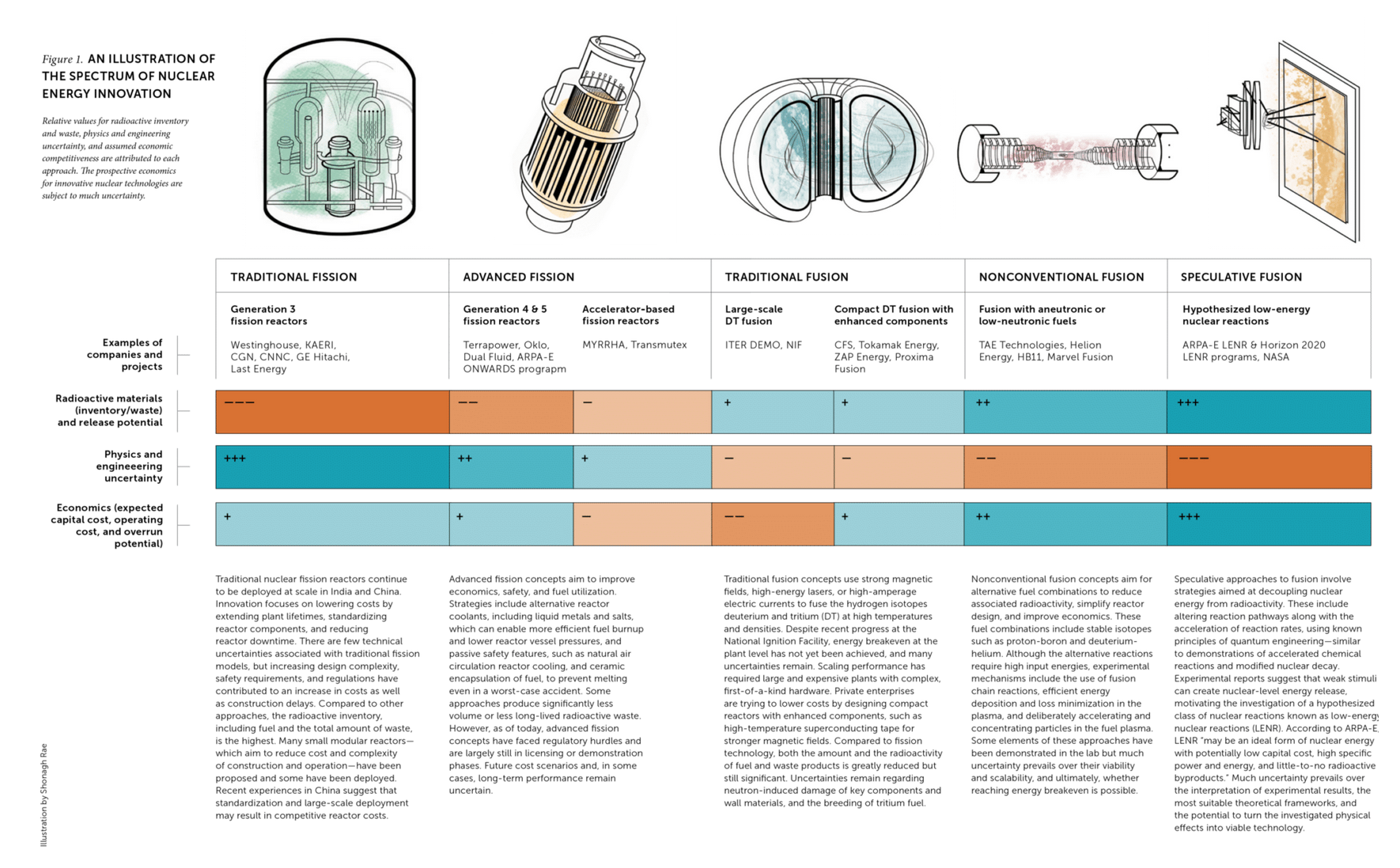Got questions about solid state fusion? Ask LENRBot
Close

Recent advances in nuclear energy innovation have opened a wide array of possibilities for clean and efficient energy solutions. A notable contribution to this conversation comes from Florian Metzler and Jonah Messinger in their article, "An Ambidextrous Approach to Nuclear Energy Innovation," published in Issues in Science and Technology in Summer 2024.

Florian Metzler, a research scientist at MIT’s Industrial Performance Center, focuses on the evolution of industries, particularly nuclear and quantum technologies. His work is supported by the Anthropocene Institute, a backer of Solid State F initiatives. Jonah Messinger brings a dual perspective as both a PhD candidate at the University of Cambridge and a contributor to SSF. His research at the Cavendish Laboratory explores advanced energy systems, and he is a senior analyst at the Breakthrough Institute.
This important article examines the complexities and opportunities in the nuclear energy landscape, with a particular emphasis on fusion and fission technologies. Metzler and Messinger propose a balanced, portfolio-based approach to research and development in the field, which could provide insights for policymakers and investors navigating a spectrum of nuclear technologies, from traditional fission to speculative fusion.
Metzler and Messinger propose the idea of a "spectrum" of nuclear energy innovation to categorize different nuclear technologies based on three key factors:

Metzler and Messinger emphasize the importance of collaboration in advancing nuclear energy innovation. They note that successful innovation in the nuclear field requires coordinated efforts across multiple stakeholders, including scientists, government agencies, companies, and investors. They advocate for national and local research agendas pursuing specific projects while maintaining openness to emerging global alternative approaches. This collaborative model helps reduce uncertainty and builds a better understanding of which technologies are most viable. Moreover, the authors highlight the need for periodic assessments and global synchronization of findings to make informed decisions about resource allocation and investment in nuclear technologies. At the same time, they recognize how important local efforts are, writing "Local efforts, forging ahead with specific projects [...] can do a lot to reduce uncertainty and develop better understanding of what works and what does not."
For those interested in the future of nuclear innovation, Metzler and Messinger's article offers valuable insights into the current landscape of nuclear technologies. As global energy demand increases, this balanced framework could play a crucial role in guiding future investments and research efforts. Their approach—one of balance and flexibility—mirrors the kind of forward-thinking necessary to unlock the potential of solid-state fusion and other emerging technologies. "We advocate greater attention to these aspects of science and innovation policy as they can lead to more effective allocation of resources and faster convergence toward optimal nuclear energy technologies for the future," they write. As part of the broader community that solid-state fusion collaborates with, their framework offers a productive orientation, which can help us move toward realizing the potential of clean, efficient nuclear energy.
Metzler, Florian, and Jonah Messinger. “An Ambidextrous Approach to Nuclear Energy Innovation.” Issues in Science and Technology 40, no. 4 (Summer 2024): 58–62. https://doi.org/10.58875/WLVH3102